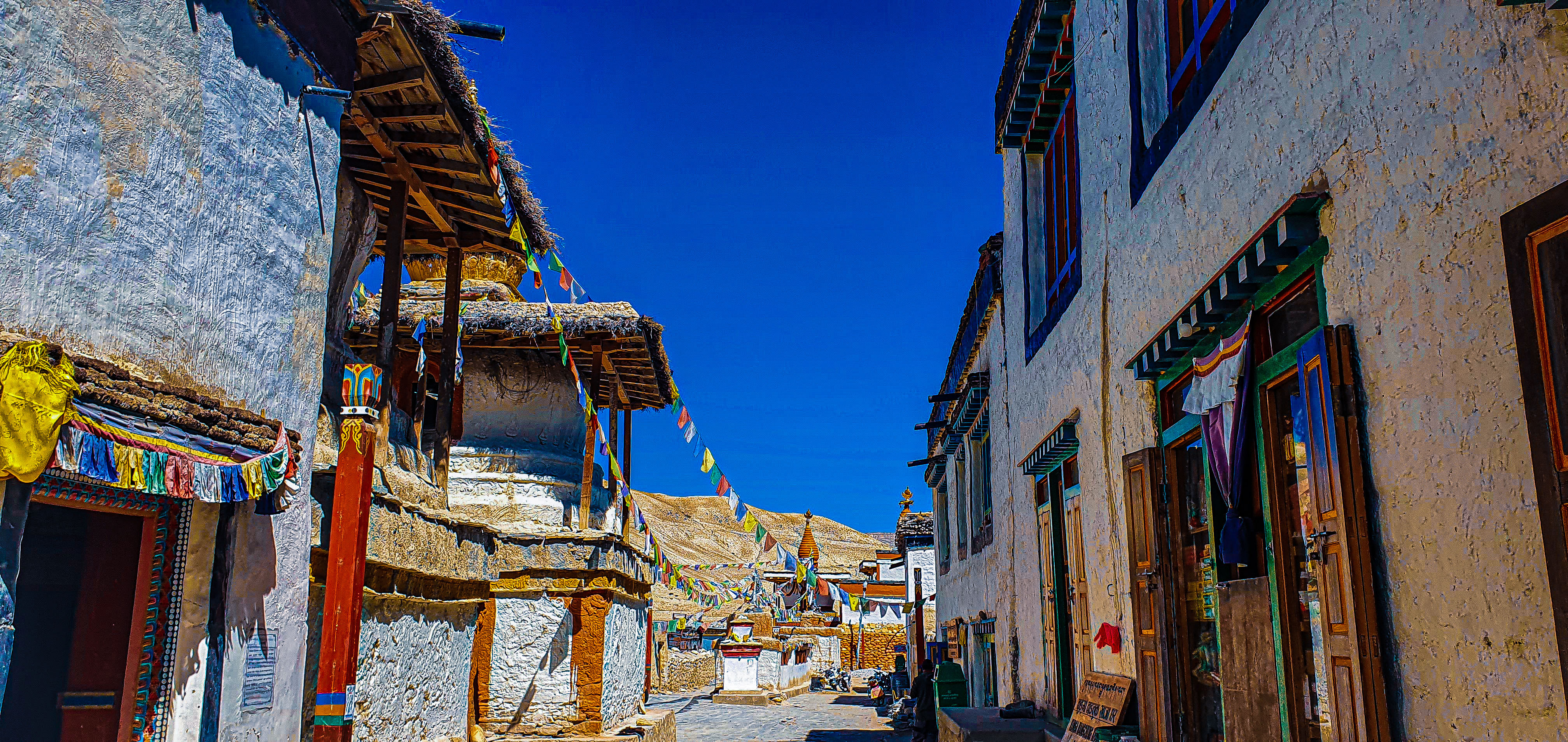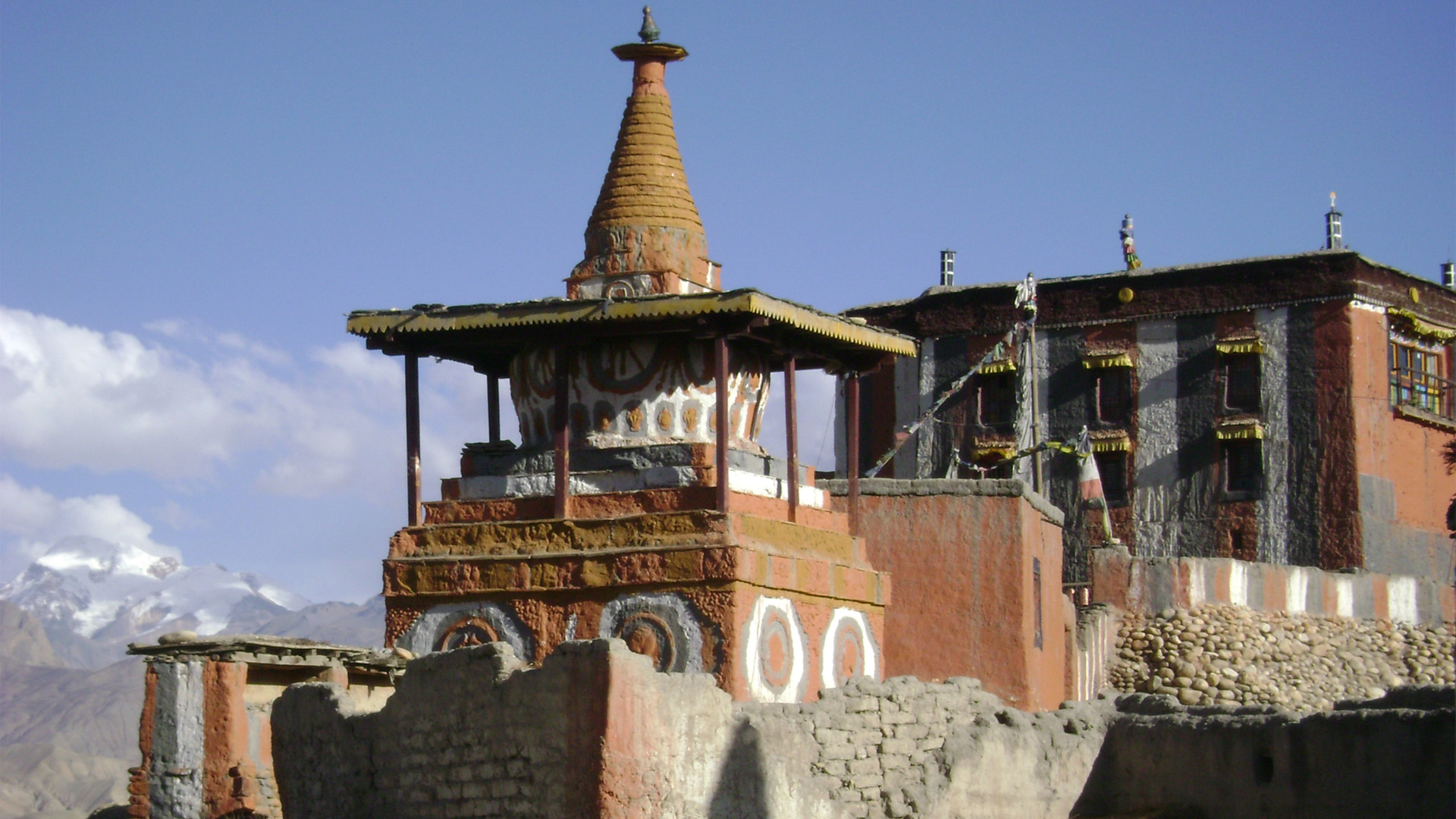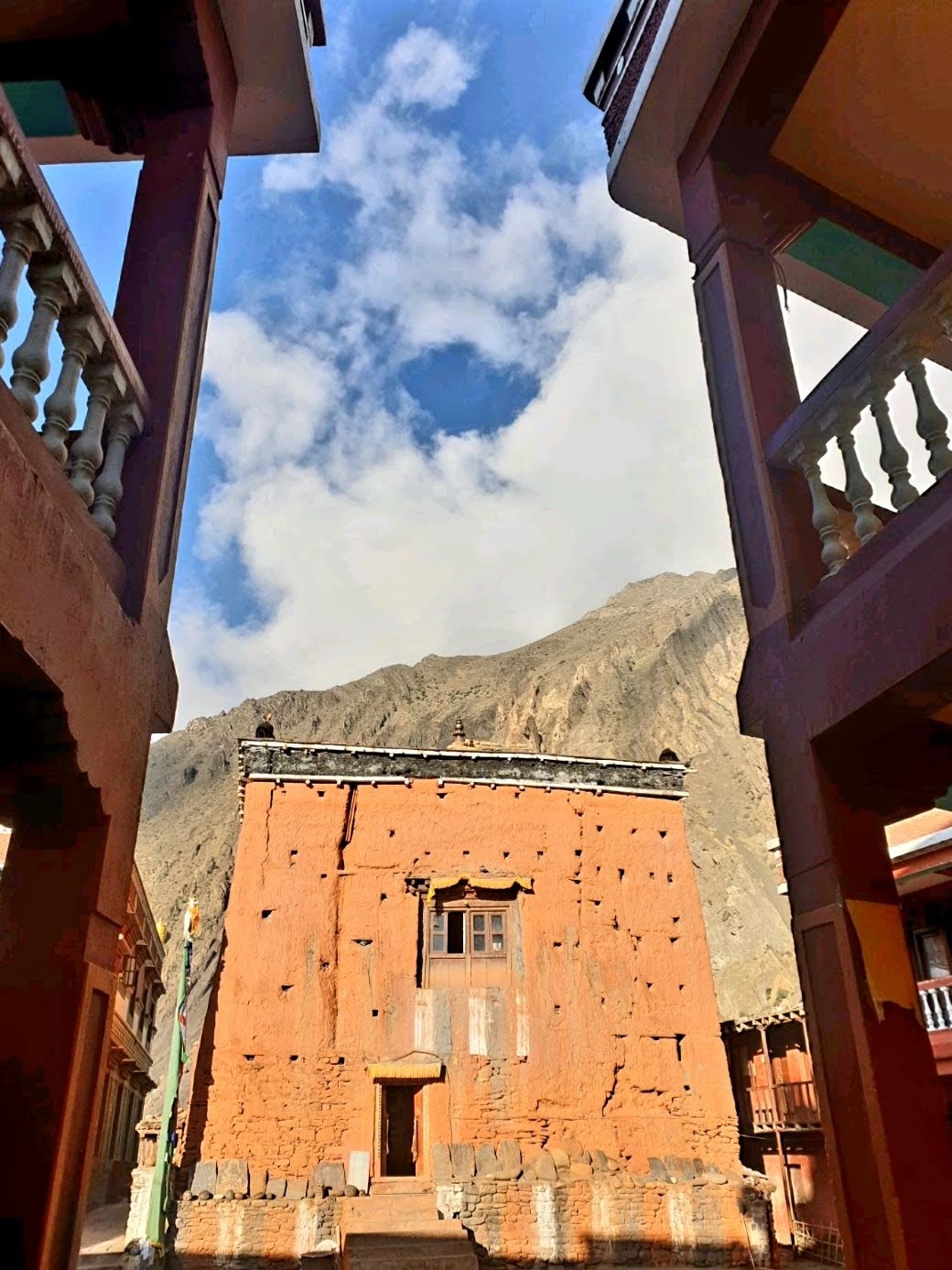Mustang region is an accepted destinations for trekkers, who would like to explore the ancient Monastery, diversified societies, more than thousand years of hundreds ruined cave and Himalayan Mountain desert with local tribes’ sphere of influence with Tibetan - Buddhist culture are the magnetism of this vicinity. Mustang region is listed as must visit places in the world.
 Upper Mustang formerly known as the Kingdom of Lo lies in the Mustang district (northern area) of Nepal. Upper Mustang is known as the forbidden kingdom of Nepal as it was restricted to travellers until 1992, which also makes this region one of the most preserved regions in the world which takes the travellers to the hidden world of ancient Buddhist Kingdom of Lo. The people of Upper Mustang still speak Tibetan language and are highly influenced by the Tibetan culture. As the border of Mustang district is close to Tibet, we can see the almost similar landscape and adaptation of Tibetan culture and people in the Upper Mustang of Nepal, which is why Upper Mustang is also known as the mini – Tibet of Nepal.
Upper Mustang formerly known as the Kingdom of Lo lies in the Mustang district (northern area) of Nepal. Upper Mustang is known as the forbidden kingdom of Nepal as it was restricted to travellers until 1992, which also makes this region one of the most preserved regions in the world which takes the travellers to the hidden world of ancient Buddhist Kingdom of Lo. The people of Upper Mustang still speak Tibetan language and are highly influenced by the Tibetan culture. As the border of Mustang district is close to Tibet, we can see the almost similar landscape and adaptation of Tibetan culture and people in the Upper Mustang of Nepal, which is why Upper Mustang is also known as the mini – Tibet of Nepal.History of Mustang
 Mustang was one of the independent kingdoms in the 15th century. By the end of 18th century, the kingdom was taken by the Nepal Government then since 1795 Mustang also became the dependency of Kingdom of Nepal. As per the history, one of the Tibetan warriors named Ame Pal from Tibet came to Upper Mustang (Lo Manthang) and started his kingdom in 1380 A.D. With his arrival in Mustang region, he brought the Tibetan - Buddhist culture. Ame Pal during his time of war founded Buddhist Kingdom as well as build the walled city in Lo Manthang. They also caved the holes in the deserted walls of Lo Manthang which is now popular as Chooser Cave. Since 15th to 17th century, Mustang was one of the autonomous kingdoms of Nepal who ruled over the trade between India and Himalayas. On 2007, it is believed that a shepherd of Mustang region found a collection of 55 different cave paintings of Lord Buddha. The people of Mustang still believe and have unofficial king (Mustangi Raja) named Jigme Dorje Palbar Bista (1930 – 2016).
Mustang was one of the independent kingdoms in the 15th century. By the end of 18th century, the kingdom was taken by the Nepal Government then since 1795 Mustang also became the dependency of Kingdom of Nepal. As per the history, one of the Tibetan warriors named Ame Pal from Tibet came to Upper Mustang (Lo Manthang) and started his kingdom in 1380 A.D. With his arrival in Mustang region, he brought the Tibetan - Buddhist culture. Ame Pal during his time of war founded Buddhist Kingdom as well as build the walled city in Lo Manthang. They also caved the holes in the deserted walls of Lo Manthang which is now popular as Chooser Cave. Since 15th to 17th century, Mustang was one of the autonomous kingdoms of Nepal who ruled over the trade between India and Himalayas. On 2007, it is believed that a shepherd of Mustang region found a collection of 55 different cave paintings of Lord Buddha. The people of Mustang still believe and have unofficial king (Mustangi Raja) named Jigme Dorje Palbar Bista (1930 – 2016).
During the time of 18th century Nepal used to import rock salt, wool, horses, yaks from Tibet and Nepal used to import grains, knives and handicrafts. For this import and export, Mustang served as the trade route between Tibet and Nepal.
Current Scenario of Upper Mustang

Upper Mustang is the home to most of the ancient Buddhist monuments. Still now, we can see the ancient monasteries (gompa), palace of King here. We can still explore the Tibetan culture having belief in the two earthen gomaps – Jamba and Thubchen. Jamba is believed to have at least 1500 mandalas (Diagrams of Buddhist spirituals) and the whole monastery is painted with these Manadals. We can explore more than 10,000 mysterious sky caves on the way to Upper Mustang. We can see these caves dug in the mountains. Till now, there is uncertainity of who caved those caves and the purpose hidden behind it. These sky caves are one of the major attractions of Upper Mustang which has also been featured on National Geography. One of the most famous caves of Upper Mustang is Chhoser which is believed that during the times of war people used to live there, sleep and eat. The structure of Chhoser cave inside and out is quite shocking and mesmerizing at the same time.
Requirements for Upper Mustang Tour
With the modernization, the road goes up to the border of Tibet in Mustag region, however foreigners are not allowed to pass to the border point of Tibet. Upper Mustang is one of the Restricted Area stated by government of Nepal where each foreigners have to get the Special Restricted Area Permit issued by Department of Immigration, Nepal. Also, another Annapurna Conservation Area Project (ACAP) of NPR is to be issued for Upper Mustang Tour. Also, at least 2 person is required to issue the Special Restricted Area Permit for Upper Mustang Tour / Trek.
With the topography, landscape and culture similar and highly influenced through Tibet makes Upper Mustang more like mini-Tibet and one of the precious places to explore around.
For more information about the Upper Mustang Tour visit:https://www.travelbuddhaland.com/upper-mustang-tour
 English
English  español
español